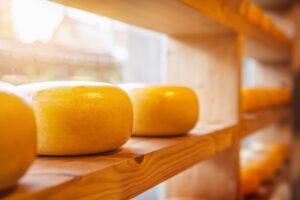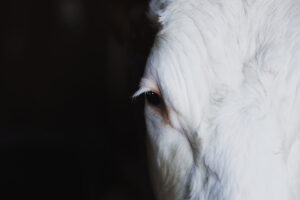Aurora Alaguero Cordovilla
The benefits of using a companion crop over herbicides when planting alfalfa are well known. Reduced soil erosion, higher forage yields or weed control are some examples as of why to choose this strategy over herbicides. New potential companion crops were investigated in southern Quebec in order to better tolerate dry conditions. Sudangrass hybrids are drought-tolerant grasses used in forage production and can be a good candidate to use as a companion crop.
A recent study published in Crop, Forage and Turfgrass Management (Matteau et al., 2020) demonstrated than sudangrass is an interesting option to establish alfalfa crops. To evaluate sudangrass as an alfalfa companion crop, the authors proposed an experiment in four different environments:
- Environment 1: Plots were sown on June 2014 in a Chateauguay clay-loam soil that was planted with canola during the previous year.
- Environment 2: Plots were sown on May 2016 in a Macdonald clay-loam soil that was in fallow the previous year.
- Environment 3: Plots were sown on June 2016 in a Macdonald clay-loam soil that was in fallow the previous year.
- Environment 4: Plots were sown on May 2017 in a mix of Chateauguay clay-loam and St. Bernard loam planted with soybeans the previous year. Pesticides were applied in this environment.
Treatments included alfalfa (“Solstice” or “Acapella”) and one of the next companion crops: Sudangrass planted at 15 Kg per Ha, sudangrass planted at 20 Kg per Ha, annual ryegrass at 20 Kg per Ha, oats at 90 Kg per Ha and solo-sown alfalfa control. These treatments were chosen due to their adaptability to different conditions; oats and ryegrass are better adapted to cooler conditions while sudangrass is adapted to drought and warmer environments.
The results obtained in this trial prove that sudangrass as companion crop increased total forage yield in three out of the four environments, when compared with the solo-sown alfalfa treatment. The oats treatment increased the total forage yield in only two of them. Oat was a better companion crop than sudangrass in environment 4, maybe because de environmental conditions at sowing. Annual ryegrass showed an excessive competition which resulted in lower total forage yields. The results suggest that sudangrass was less competitive with alfalfa than oats and ryegrass. Weed control was similar for all treatments except in environment 4 due to weather conditions, as sudangrass needs warmer conditions for better results.
Comparing data regarding forage nutritive value, the researchers observed significant differences between treatments and environments. In three environments the average seasonal neutral detergent fiber concentration was highest in treatments with sudangrass or oat while the crude protein concentrations had greater values in solo-sown alfalfa treatment. The results obtained for ryegrass as a companion crop were comparable with that of solo-sown alfalfa in three environments. The authors also evaluated the impact of a companion crop on alfalfa winter survival. Best results were obtained with sudangrass because it had no impact on alfalfa stem density during the spring of the post-sowing year. This suggests sudangrass is less competitive with alfalfa than the other treatments that did show a decrease in alfalfa stem density compared with solo-sown alfalfa.
In conclusion, this study proves sudangrass can be a good companion crop to establish alfalfa when sown in early June or in drier and hotter regions.
Reference
Matteau, C., Seguin, P., Baurhoo, B., & Mustafa, A. F. 2020. Sudangrass as companion crop to establish alfalfa. Crop, Forage & Turfgrass Management, 6:20006.
© 2020 Dairy Knowledge Center. All Rights Reserved.











